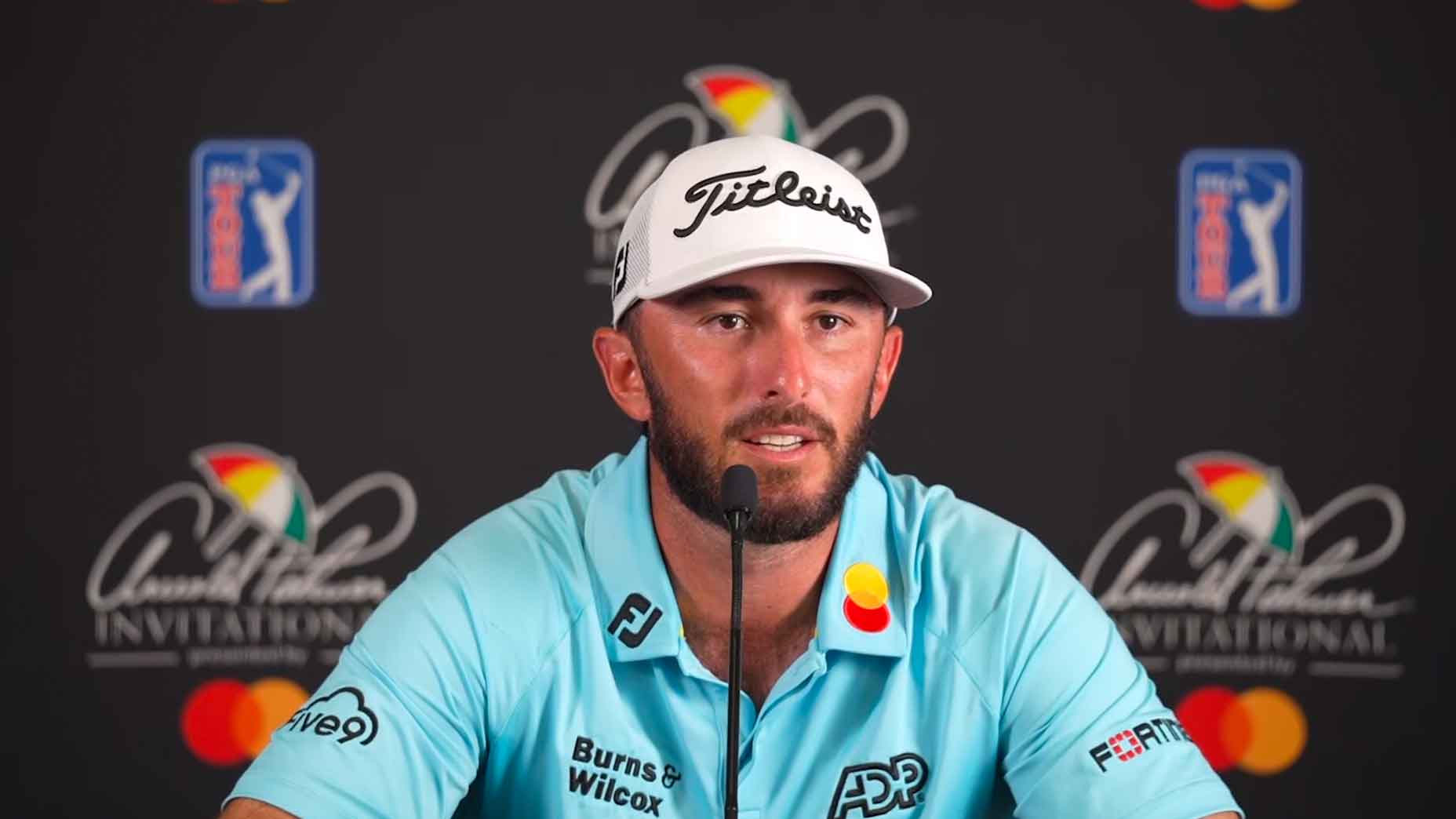When Max Homa stepped to the lectern on Wednesday morning at the Arnold Palmer Invitational, he came armed with a promise:
“I could rant on this for a while.”
And then, for 1,400 words, 11 paragraphs and some four uninterrupted minutes, he did precisely that.
Homa came into the press room on the heels of change on the PGA Tour — significant change. Under the new structure outlined by Tour commissioner Jay Monahan in a memo to players Wednesday, many of the Tour’s 17 so-called “designated events” will take on a dramatically different shape in 2024 next to their initial 2023 iterations. Some events will now have a limited field of 70-80 players, some will feature no cuts, and all will be adjusted to make for a consistent playing cadence for both players and fans.
Among the changes enacted by the new schedule are two hard realities: it will be harder at times for some players to climb the Tour ranks, and it will be easier at times for those in the upper echelon of the sport to stay there. That is mostly good news for those who wish to see golf’s biggest stars more often, but it is mostly bad news for those who adore the pesky underdog stories that form a noticeable chunk of golf’s subculture.
Enter the rare player to have lived both of those realities: Max Homa.
It was just five years ago that Homa found himself on the fringes of golf relevancy, a gifted-but-inconsistent player floating between the PGA and Korn Ferry Tours. For a time, the number of golfers ranked higher than him numbered in the thousands. Today, the number of golfers ranked higher than Max Homa can be counted on just two hands. He is the eighth-ranked player in the world, a six-time PGA Tour winner, and at age 32, unquestionably one of the Tour’s brightest stars.
So, what does Homa — one of the biggest beneficiaries of the PGA Tour’s old guard — think about the new regime? He’ll need a minute (or four) to explain it.
“I love the new changes,” he said, beginning a lengthy, uninterrupted answer on the subject at the Arnold Palmer Invitational. “The product is important. I think it’s easy to frame these changes as a way to put more money in the top players’ pockets. But it has been made to make it easier and more fun for the fans. I know it’s low-hanging fruit to jump on, Oh, this is just a money grab. This is to make it better for the fans. It is a guarantee on who will be at events and leaning more on the more there.
“It is more opportunity for the top players to battle it out late on Sundays,” Homa said. “Which, you look back at times of Phil and Tiger, the two best players growing up for me watching, and they had like maybe two real battles. So we’re going to have more of that.”
Homa says he recognizes that golf’s much-bandied “meritocracy” will suffer under these changes. The best players will inherently have an advantage in earning the largest sums. But Homa wonders if the new schedule could have the unintended benefit of helping those in the PGA Tour’s middle class.
“The non-designated events are the same purses with, on paper, weaker fields,” Homa says. “There’s a lot of room for growth throughout that. You can play your way into the designated events.”
On the topic of limited fields, Homa was particularly protective of those on the outside looking in. In restricting access to those high-money weeks to “70-to-80 players,” per Monahan’s memo, Homa argued the Tour’s intent wasn’t to keep players out, but rather to provide a lifeline to those in non-designated events.
“The part that’s frustrating and maybe just simply misunderstood is that if we made these fields very large in these designated events, it would ruin non-designated events,” Homa said. “It would ruin them. No one would play in half of them because it would no longer fit your schedule.”
Homa should know this. As a member of the Player Advisory Council responsible for drafting the new schedule, he was in the room when these changes were proposed.
“I think that the Tour’s done a great job of looking into it,” Homa said. “Seeing that [70-80] would be a great number to cut to make sure that we still have competitive events that are non-designated.”
It’s a strange logic — exclusivity for the sake of inclusivity — but it’s one that might make real sense as it involves the PGA Tour. Last week’s Honda Classic drew a historically dreadful field, the result of a series of large-field designated events nearby on the calendar. Under the new format, the Honda could represent the event most aided by the changes.
With so few slots in the big events, notable players will find themselves in non-designated events, raising the status and intrigue behind those tournaments. It’s not perfect, Homa admits, but it’s a way to keep golf’s meritocracy alive at all.
“Maybe not the top-50 big names, but big names [will be] keeping the sponsors and the fans happy with the parity,” Homa said. “Guys everybody has watched play golf, win golf tournaments and excel at this game still in those [non-designated] fields. So I think that that is an important distinction to make before jumping on something negative.”
As Homa finished that final sentence, a hush fell over the press room. A PGA Tour moderator stepped into the silence.
“Do you need a break?”
Homa flashed a smile.
“No, I’m good,” he said. “Sorry guys.”
